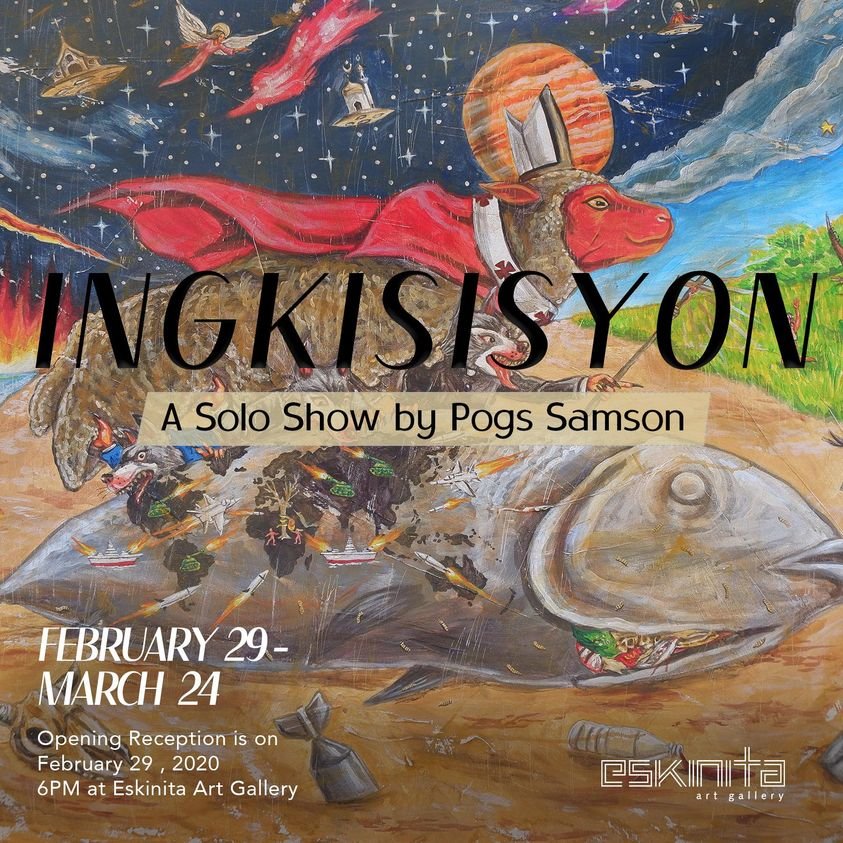
Ingkisisyon
Pogs Samson
February 29 to March 24, 2020
What do Philippine history books say about Inquisition?
For one, that it was established to grant power to religious commissaries and call upon the magistrates of audencia and other civil authorities to aid in the execution of his duties that is aimed towards the preservation of the purity of faith. Given that a commissary is a competent person, conversant with all phases of ecclesiastical law and experience, and selected because he possesses technocratic excellence, above all.
But with this technical and tortuous history book definition comes Pogs Samson. His solo exhibition entitled Ingkisisyon or Inquisition conveys an enthralling and vibrant approach on the essence of the movement enabled by the magical elements he is known for, let alone his artistic virtuosity to put emphasis on the seriousness of the situation he converses to his audiences.
The movement of inquisition entails a lengthy examination of all books that are in circulation, an investigation and apprehension of all persons suspected of the crime of bigamy, heresy, or any practice that mars the purity of Christian faith. People who are found culpable of said crime is given a corporal or violent punishment. But with this power, ill effects manifest an excessive utilization of its agents to exhaust their privileges and extend their influence for personal ends.
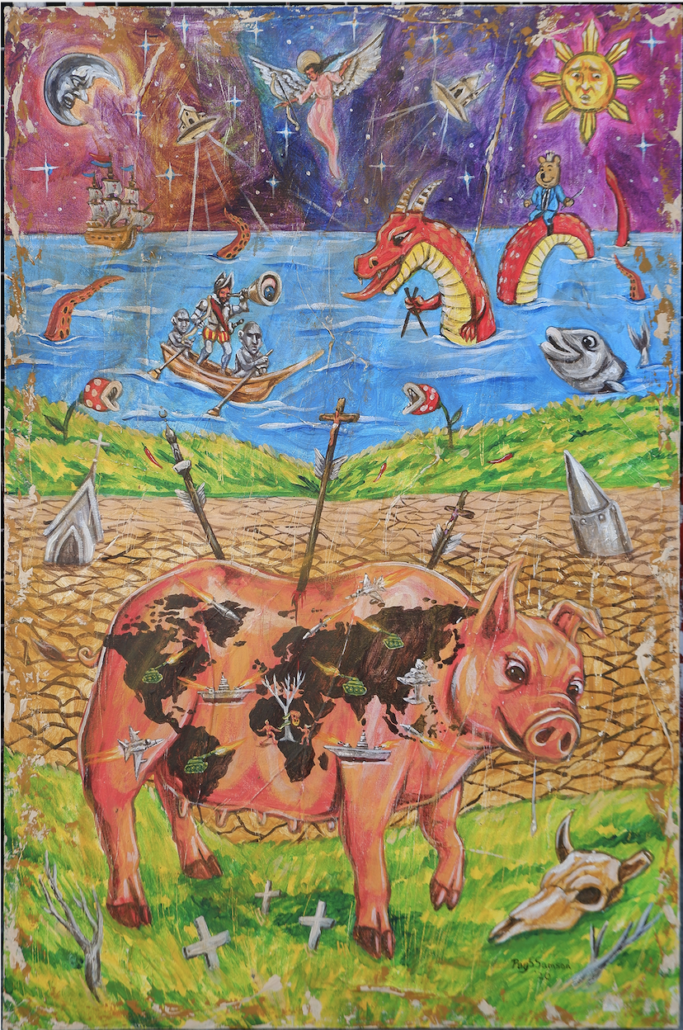

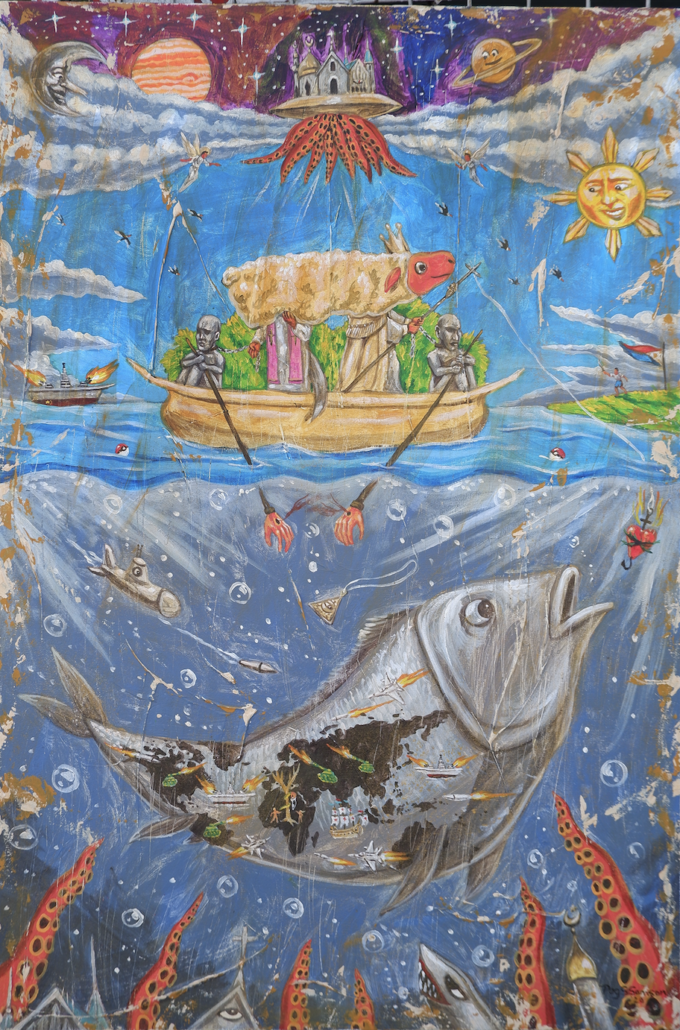
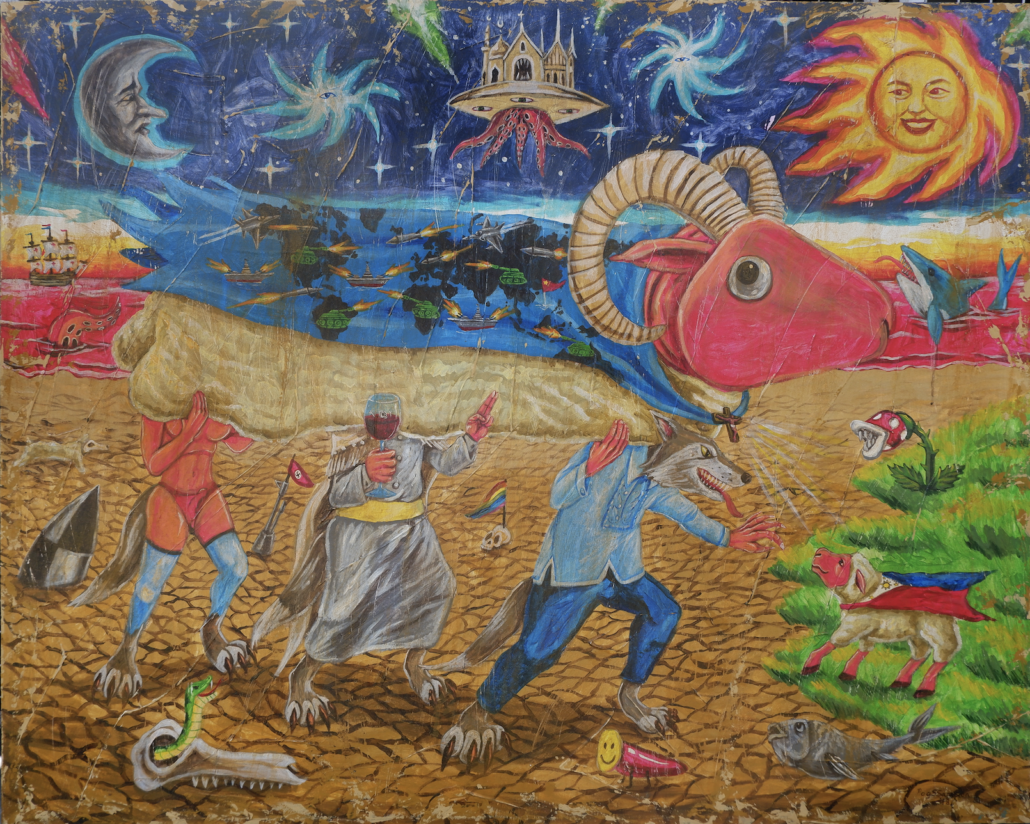
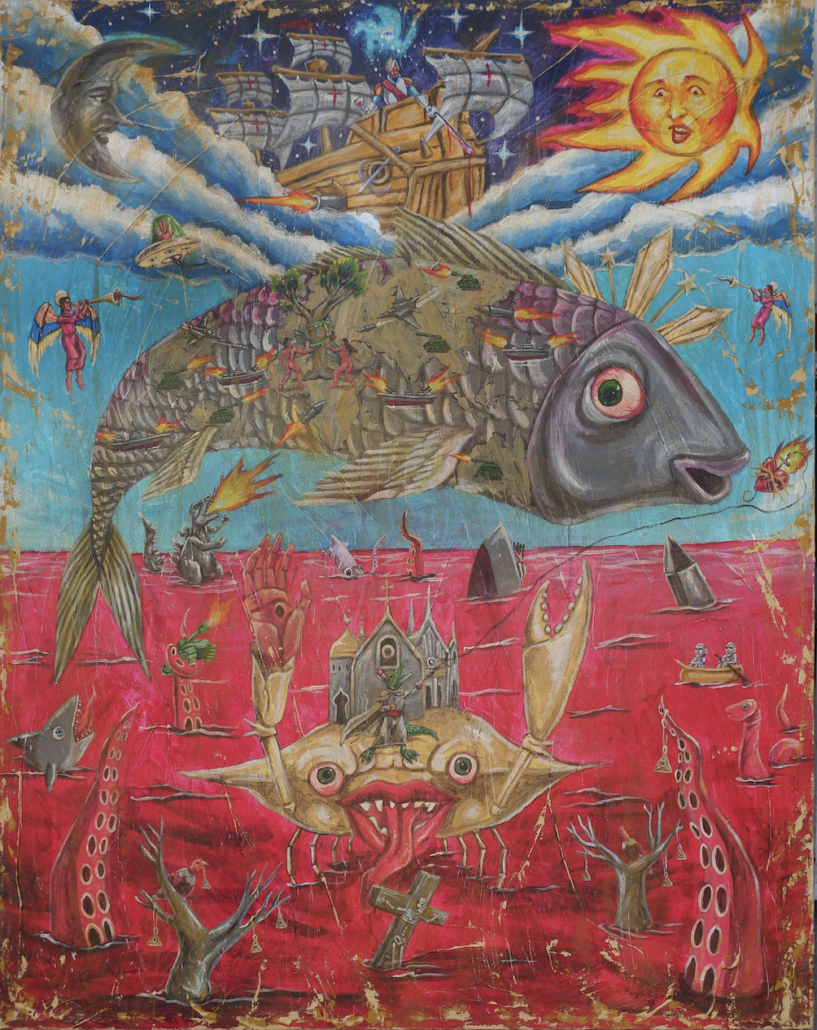
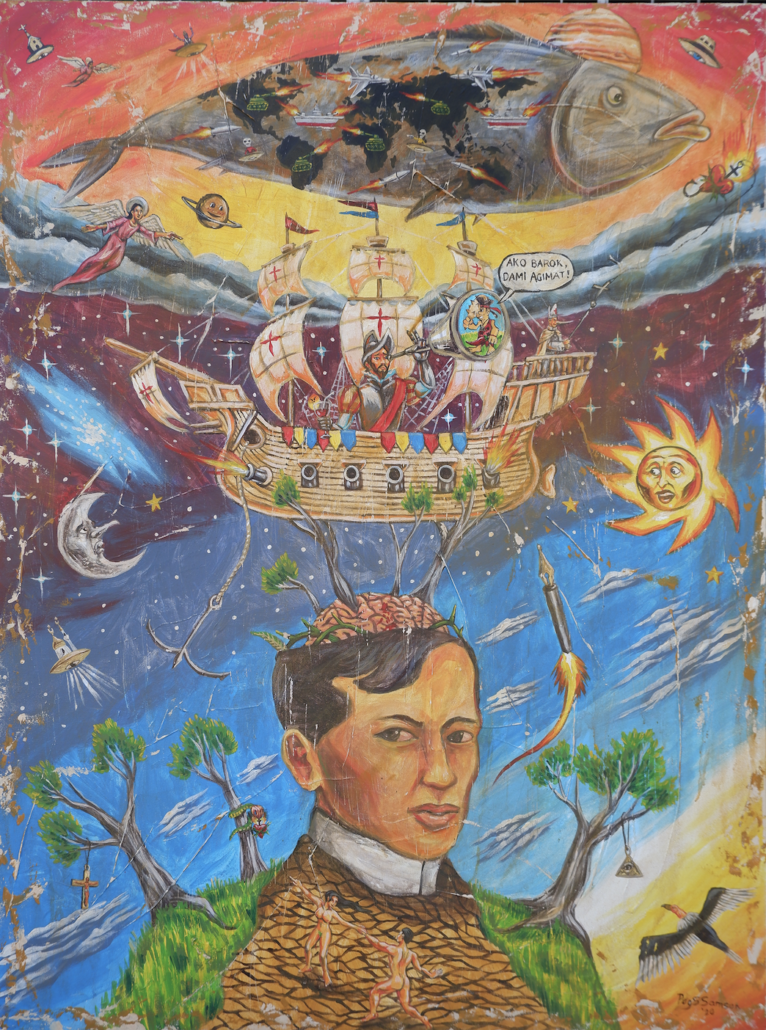
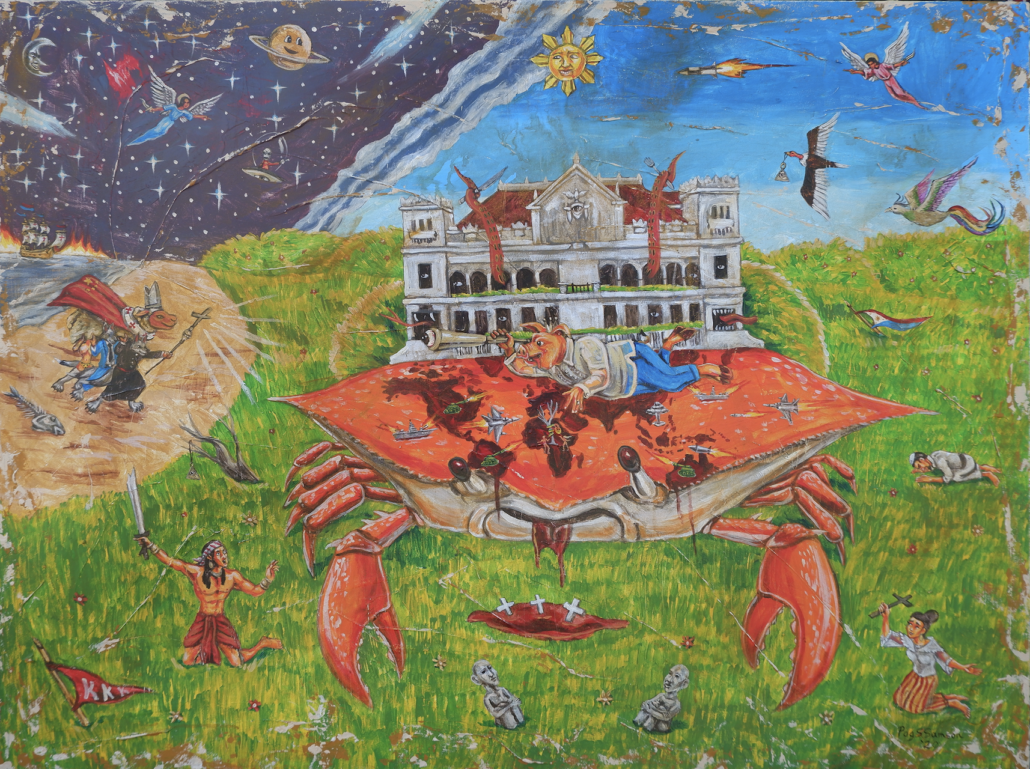
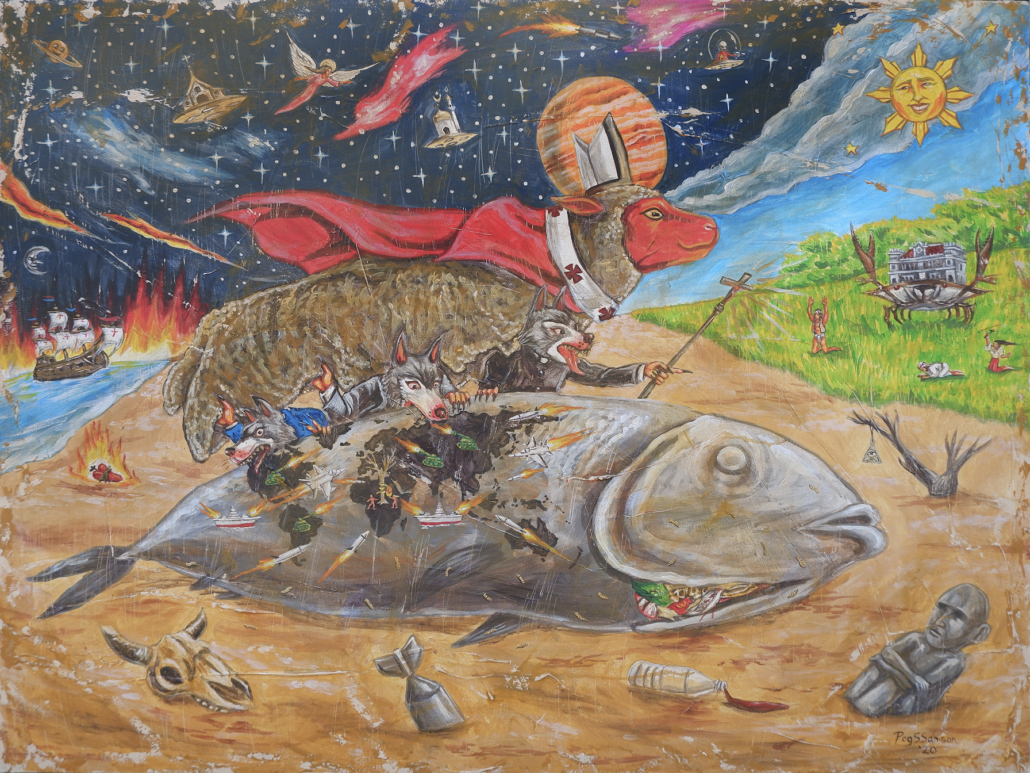
As visibly portrayed in the works Ingkisisyon, Victoria, Sagradong Porkchop, Holy Sheep, Holy Flying Fish, and Ang Pananaw ng mga Lobong Nagpapanggap na Tupa, vicious players in forms of a wolf, and actual Spanish inquisitors blatantly display their misuse of power as they try to exhaust life out of a fish, and threatens the portrayed sheepishness charm of Filipinos. Above this, these recurring characters sit on top of their wealth at the cost of wearing out the other.
A much contemporary take on inquisition can be found in the work entitled Ang Pananaw ng Republikang Alimango. Here, Samson makes use of the image of Malacañang and placed it on top of a crab who appears to be in misery and pain. The administration’s antagonistic approach on dissent in an attempt to clear away opinions that are against their beliefs and lax opinions are treated as perverted morals, and thus violence should be an excusable retribution. So instead of being agents for progress and poverty alleviation, the leaders who are in power only make sure they remain in power.
In Ang Sandata ni Rizal, Samson made use of Jose Rizal, the national hero of the Philippines, as a central figure of his canvas. Here he attempts to suggest a solution on the atrocities because of the mistakes of the past. That perhaps, a way to anchor a ship that has sailed long ago is to put value to ones’ roots, and cultivate a huge head above one’s shoulders. That Rizal, a man who is revered, sacrificed his life to preserve the Filipino identity and social justice, should be taken as a leading example.
Samson envisions each canvas as a very manifestation of the act of inquisition – a detailed and intensive cross examination of circumstances in order to spot a possible misnomer or an irregularity. The infinitesimal nature of all the elements, and symbols that Samson puts forward, creates its own line of inquisitions – a questioning and breaking down of one’s own beliefs to focus on the even smaller things that pester one’s ability to seek for introspection.
At a glance, one canvas is a picture of humanity – of religion, politics, vegetation, bombs, expeditions, advancements, and poverty. And a canvas overwhelmingly teemed with these elements, much like Rizal’s example, should invoke a vehement attitude and great indignation to demand for change. That the recurring divulgence of the stories of these unjust figures should ultimately then be put to a halt.
-Karen Tesalona

